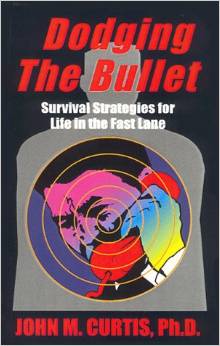When the stock market began selling off after hitting a record high May 19, with the Dow Jones Industrial Average hitting 18,315, long-awaited profit-taking began. Looking to the downturn in China, the Dow, tech-rich Nasdaq and corporate S&P 500 had the perfect excuse to sell-off. After rising some 300% since hitting bottom March 6, 2009 of 6,443, the Dow and other indexes were bound to sell-off. Leading economists like Yale Nobel Prize-winning Prof. Robert Shiller and former PIMCO Co-CEO Mohamed El-Erian have long predicted a major market correction. Plunging some 14.4% since May 19, markets roared back some 1,000 points during a spectacular dead-cat’s bounce. El-Erian and Shiller warned investors not to get too euphoric about a rapid rebound. Bargain hungry mutual, hedge and private equity funds like to buy on dips, despite the fact the VIX index of market volatility hit the highest level since he Great Recession of 2008.
Before Labor Day, market makers like Goldman Sachs and J.P. Morgan are likely to give sell-signals to major funds, testing recent market lows. When markets resume after the holiday, they’ll face the uncertainty of what Fed Chairman Yellen will do when her Federal Open Market Committee meets Sept 16. Yellen faces pressure from some Fed governors to raise interest rates for the first time since former Fed Chairman Ben Bernanke dropped the federal funds rate of zero-to-a-quarter percent Dec. 15, 2008. Since ending the third round of bond-buying or quantitative easing Oct. 14, 2014, Yellen has watched liquidity together with the dropping unemployment rate now a 5.3%. Wall Street dreads a rate hike, believing it could plunge the economy into another recession. With the nation’s Gross Domestic Product for Q2 revised to 3.7%, Yellen’s under more pressure to hike rates at least 25 basis points to offset the Fed’s inflation target.
International Monetary Fund Director Christine LeGarde asked Yellen June 4 to hold off on a 2015 rate hike, given the slowdown in China and Europe. When you look at the big picture, including Europe’s ongoing immigration crisis and recent $96 billion Greek bailout, there’s nothing to cheer about when it comes to the global economy. Yellen wants to raise rates to prove that the U.S. economy has attained a degree of economic recovery, independent of the global economy. GOP presidential candidate Donald Trumpblamed the recent Wall Street sell-off as proof of Obama’s weak economy. Yet rising some 300% since taking office, markets go through buy-and-sell cycles, especially when price-to-earnings-ratios, as Prof. Shiller, points out, get too inflated. Market corrections help deliver value, where the nation’s biggest funds can buy back in without worrying about losing money. If Yellen signaled to Wall Street she won’t raise rates, the slide would stop.
Whatever Labor or Commerce Department data, or the Fed’s own data, Yellen should heed LeGarde and other global economists that see economic storm clouds. As the world biggest economy at about $17trillion, the U.S. has more outsourced jobs to Asia than any industrialized nation. If China continues to devalue currency and faces slow GDP growth, it’s going to hurt U.S. and EU GDP growth. Since dropping to multiyear lows last week under $40 per barrel, the temporary oil rally is bound to fizzle. When Iran comes on line after signing the Vienna P5+1 nuke deal with the U.S., Britain, France, Russia, China and Germany, it’s going to flood world markets with petroleum, dropping prices to new lows. It’s going to be difficult to find anything positive in world oil markets going forward, further depressing oil-exporting countries like Saudi Arabia, Russia, Mexico and Venezuela. With oil revenues down around the globe, consumer demand also drops.
Today’s 3% market drop before Labor Day reflects global uncertainty and what actions, if any, Yellen takes on interest rates. However the Fed revised second quarter GDP, there’s no indication that global markets will do anything but drag down the U.S. economy. When the Iran nuke deal is approved by Congress Sept. 15, global markets can expect downward pressure on commodity prices, especially oil. Concerned about global deflation, it won’t be easy for world markets, especially in China and Europe, to rebound from falling commodity prices. When Yellen analyzes global markets, she’ll decide to hold off on any rate hike in 2015. Once she decides Sept. 17 to hold off on a rate hike, markets can expect to rebound off recent lows. Price-to-earnings ratios are still high but with expectations of more rock-bottom rates, mutual, hedge and private equity funds should take longer positions in various value-laden stocks now considered bargains.
El-Erian and Shiller warn small investors about the possibility that markets could roll back much further from today’s lows, with the Dow around 16,000. Down only about 10% from May’s record highs, there’s little positive globally to jump on the buying bandwagon. If Yellen decides give the markets more stimulus, she’ll find some happy campers on Wall Street. Pushing stocks higher on Wall Street won’t change global pressures in China or Europe, currently battling sluggish growth. Floods of immigrants from war-torn Middle East or poverty-stricken Africa promise to keep the EU’s GDP down for the foreseeable future. Yellen can’t operate the U.S. economy in a global vacuum. Whatever happens in China and Europe impacts American business, especially U.S. consumers. Recent bumps in global oil prices won’t last when Iran starts flooding world markets with oil. Keeping more monetary stimulus can’t hurt the world economy.



